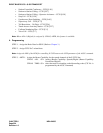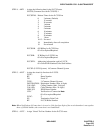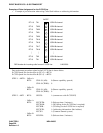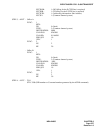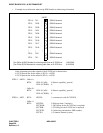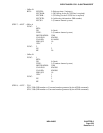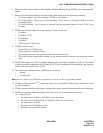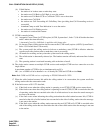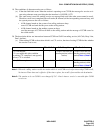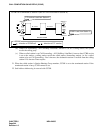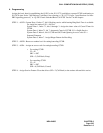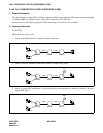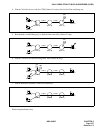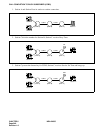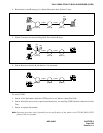
CHAPTER 6 NDA-24305
Page 242
Revision 1.0
CALL COMPLETION ON NO REPLY (CCNR)
(b) Called Station
• the station is in lockout state or make-busy state
• the station sets Call Back or Call Back is set to the station
• the station sets Call Back-CCIS or Call Back-CCIS is set to the station
• the station uses Call Hold
• the station sets Call Forwarding-All Calls/Busy Line (providing that Call Forwarding service is
successful)
• Attendant Camp on with Tone Indication is set to the station
• the station sets Call Waiting service
• the station is restricted this feature
15. CCNR is canceled when:
(a) Automatic Cancel Timer for CCNR expires (ASYD, System data 1, Index 71, b0-b3 decides the timer
and b7 makes the timer effective).
* Automatic Cancel for Call Back is applied to this feature also.
(b) No Answer Timer (calling station does not answer the CCNR recall) expires (ASYD, System Data 1,
Index 139. Default data is 30 seconds).
(c) The system recalls the calling station in lockout or make-busy state (CCNR is effective when the
system recalls after lockout state or make-busy state is recovered).
(d) All trunks for recalling are busy when the system recalls the calling station.
(e) The called station is abnormally released (ex. The handset remains off-hook) and turned into lockout
state.
(f) The operating station is restricted incoming calls at the time of recall.
16. The single station cannot set multiple CCNR services and multiple CCNR services cannot be set to the
single station.
A maximum number of CCNR to be set simultaneously per LP =
480 – (no. of ISDN call to be handled + no. of already set CCBS and CCNR service
Note
)
Note:
Both CCBS and CCNR services conforming to ETS300 366 and IS-13870.
17. When the called station becomes idle while the calling station is in conversation, the system recalls the
calling station after the conversation ends.
18. If the fault occurs at IS-11572 data link;
(a) If the fault occurs when the calling station is operating to set CCNR, CCNR service cannot be set.
(b) If the fault occurs when the calling station is operating to cancel CCNR, CCNR is canceled at the side
of operating station but not canceled at the side of called station to be set since the cancel message is
not sent to the station.
(c) If the fault occurs when informing the calling station that the called station becomes idle, CCNR is
canceled at the side of called station, but not canceled at the side of calling station since the message
is not sent to the station.
(d) If the fault occurs when the calling station answers the recall (CCNR call), CCNR is canceled at the
side of the calling station but not canceled at the side of the called station since the message is not sent
to the station.



